Things to do in Bordeaux
Visitors will be impressed by the attractions in Bordeaux and will find plenty of worthwhile things to see and do in this proud old city, especially if they like wine.
Vieux Bordeaux, the old town, is a treasure trove of magnificent buildings and is a lovely area to stroll around. Most of the city's attractions are clumped together in this charming area, which makes it convenient to tackle sightseeing on foot. Boat rides are also a popular and fun way to see the old town. The Grand Theatre de Bordeaux, considered one of the grandest 18th-century theatres in the world, is a really special place to watch an opera or ballet. The Basilique St-Michel, a magnificent Gothic cathedral and a feature on the Santiago de Compostello pilgrimage, has windows designed by the famous master glass worker and decorator, Max Ingrand. The Musee des Beaux-Arts is home to a fine collection of European paintings.
Two venerable old squares to visit are the Esplanade des Quinconces, which is enormous, and the smaller but more beautiful Place de la Bourse. A walk along the river from Place de la Bourse to the Port of the Moon is a wonderful experience and encompasses the best of Bordeaux.
Of course, for many, the main attraction of Bordeaux is the wine and there are numerous vineyards and cellars to be explored. Most of the famous wineries in the area offer tours and tastings and Bordeaux certainly doesn't fail to impress in this regard.
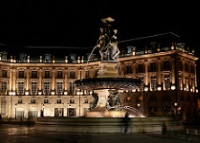
Vieux Bordeaux
Vieux Bordeaux (old town) centres on the Quartier St-Pierre, which is surrounded by narrow streets, and is lined with old churches and grand mansions adorned by wrought-iron balcon…
Vieux Bordeaux
Vieux Bordeaux (old town) centres on the Quartier St-Pierre, which is surrounded by narrow streets, and is lined with old churches and grand mansions adorned by wrought-iron balconies and arcading. There has been a lot of restoration over the last few years, but some streets remain a bit seedy. However, in a way, this ramshackle look adds to the atmosphere.
One of the most opulent displays of Bordeaux's former glory is the Grand Theatre. It was built between 1773 and 1780 on the site of a Roman temple and is faced with an enormous colonnaded portico topped by 12 Muses and Graces. Visitors can view the impressive interior by attending one of the operas or ballets.
Nearby is the Esplanade des Quinconces, which was laid out between 1818 and 1828 and covers nearly 12 hectares (30 acres), making it the largest square of its kind in Europe. A smaller but more beautiful square is the earlier Place de la Bourse. Its centrepiece is a fountain of the Three Graces and is bordered by quays opening onto the river and flanked by the Custom House and the Stock Exchange. Crossing the river is the impressive Pont de Pierre, which was built during Napoleon's Spanish campaigns, and has 17 arches in honour of his victories. The views of the river and quays from here are memorable, particularly when floodlit at night.
Important churches include the delightful Basilique St-Michel, across from which is the Fleche St-Michel, which has the tallest stone tower in France; it was built in 1472 and is 374 feet (114m) high. During July and August (afternoons only) visitors can climb the 228 steps for wonderful views over the river. To the west is the 13th-century Cathédrale St-André, the most impressive and ostentatious church in Bordeaux (look out for the wonderful sculptures in the doors).
The city's museums are gathered around the cathedral, the best being the Musée des Beaux-Arts, which has a fine collection of European art including works by Reynolds, Titian, Rubens, Matisse and Marquet, a resident of the city. The old town is fairly compact and is best explored on foot; two-hour walking tours can be arranged through the local tourist office. Boat tours can also be arranged.
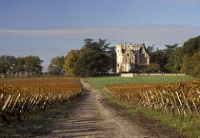
Bordeaux Wine Country
The area surrounding Bordeaux produces more than 70 million gallons of wine each year, including some of the world's best red wine. Many vineyards are small family-run businesses w…
Bordeaux Wine Country
The area surrounding Bordeaux produces more than 70 million gallons of wine each year, including some of the world's best red wine. Many vineyards are small family-run businesses without staff to cater for tourists, but the larger, more famous wineries organise tastings and tours at the cellars and vineyards.
Château Mouton-Rothschild is located just north of Pauillac. It is still run by the Rothschilds and attracts thousands of visitors each year, who come as much for the impressive collection of art and the picturesque estate as for the wine. Château Lafite-Rothschild is nearby and was purchased by the Rothschilds in 1868. The vinothèque contains many vintage bottles, several dating from 1797. Château Margaux is an imposing 19th-century château south of Pauillac; the estate produces three wines from its 650 acres.
To see the vat rooms and wine cellars, visitors should make an appointment by email or phone. These are just some examples of famous wineries in the region; visitors could easily spend several wine-drenched days exploring this beautiful area.
Website www.bordeaux.com/uk/
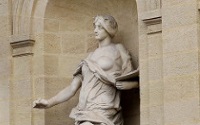
Musée des Beaux-Arts
The Musée des Beaux-Arts was established in 1801 and is one of the largest French galleries outside of the capital city of Paris. Featuring the works of artists from the 15th to t…
Musée des Beaux-Arts
The Musée des Beaux-Arts was established in 1801 and is one of the largest French galleries outside of the capital city of Paris. Featuring the works of artists from the 15th to the 20th centuries, visitors can view the masterpieces of Perugino, Titian, Rubens, Veronese and Delacroix. The museum is best known for its outstanding collection of French and Dutch paintings. Although paintings are the core of the collection, there are also valuable drawings and sculptures on show. Apart from the impressive permanent collection, the museum also regularly organises special, temporary exhibitions and runs a rich cultural program of concerts and lectures.
Website www.culture.gouv.fr/culture/bordeaux
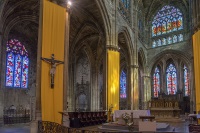
Basilique St-Michel
Constructed in stages between the 14th and 16th centuries, the Basilique St-Michel is a typical Gothic-style church and the main place of Catholic worship in Bordeaux. The main dis…
Basilique St-Michel
Constructed in stages between the 14th and 16th centuries, the Basilique St-Michel is a typical Gothic-style church and the main place of Catholic worship in Bordeaux. The main distinguishing feature is the Basilique's tower and spire, which at a height of 374 feet (114m), is considered the highest in the south of France. At the base of the tower lies an ossuary where an exhibition of the mummies excavated during the 19th century can be viewed.
Most of the original stained-glass was destroyed in World War II, and has since been replaced by new windows by modernist artist Max Ingrand. Another famous feature of the church is the pulpit, which features Saint Michael, the warrior saint, slaying the dragon. There is a pleasant square in front of the Basilique where weary travellers can take a break and do some people watching or socialising.
There are some wonderful views to be found climbing the tower and this is well worth doing but it is only open to visitors between June and September. The Basilique St-Michel is a stop on the famous Santiago de Compostela pilgrimage and therefore receives numerous pilgrims every year.
Website www.bordeaux-tourism.co.uk/offre/fiche/fleche-saint-michel/PCUAQU033FS0003N
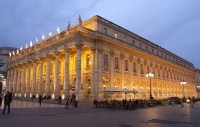
Grand Théâtre de Bordeaux
Designed by renowned architect Victor Louis, the Grand Théâtre de Bordeaux was built between 1773 and 1780 and is one of the grandest 18th-century theatres remaining in the world…
Grand Théâtre de Bordeaux
Designed by renowned architect Victor Louis, the Grand Théâtre de Bordeaux was built between 1773 and 1780 and is one of the grandest 18th-century theatres remaining in the world. It served as the National Assembly for the French Parliament briefly in 1781 and was the scene of the premiere of the ballet La Fille Mal Gardee in 1781.
This theatre is the oldest in Europe to have never burnt down or needed rebuilding since its erection, and is now home to the Opéra National de Bordeaux, as well as the Ballet National de Bordeaux. The interiors are as impressive as the architecture and taking in a performance here can't be missed by opera or ballet fanatics. Travellers should see the website for the event calendar.
Although many people still choose to dress up formally for performances, visitors can wear whatever they please and not feel uncomfortable. Visitors should be aware when booking seats that some have reduced visibility; whoever makes the booking should point this out. Guided tours of the theatre are available; there is a restaurant in the building.
Website www.opera-bordeaux.com



